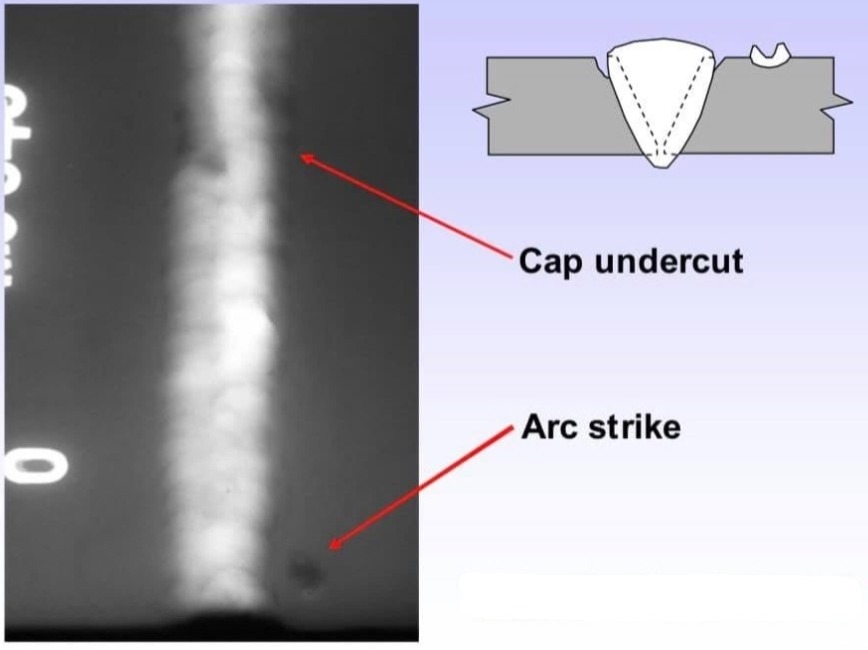Preventing Weld Undercut Made Easy: Key Techniques Unveiled
Wiki Article
Understanding the Art of Welding: Exactly How to Avoid Undercut Welding Issues for Flawless Fabrication Results
Efficiency and precision are vital in the globe of welding, where even the tiniest blemish can endanger the architectural integrity of a fabricated piece. One common obstacle that welders face is damaging, a flaw that can damage a weld joint and lead to expensive rework. By understanding the source of undercut welding and applying reliable techniques to avoid it, welders can boost their craft to brand-new levels of excellence (Preventing weld undercut). In the pursuit of remarkable construction results, grasping the art of welding to prevent undercut problems is not simply a skill but a need for those aiming for perfection in their job.Understanding Undercut Welding

To stop undercut welding, welders need to make sure proper welding parameters, such as readjusting the existing, voltage, travel rate, and maintaining the right electrode angle. Furthermore, making use of the proper welding technique for the certain joint arrangement is necessary. Utilizing weaving motions or backstepping techniques can aid make sure proper weld metal deposition and minimize the likelihood of undercut formation. Routine inspection of welds during and after the welding procedure is additionally important to capture any kind of undercut early and make needed changes to avoid additional issues. Preventing weld undercut. By understanding the reasons for undercut welding and carrying out preventative measures, welders can accomplish high-grade, structurally audio welds.
Sources Of Undercut in Welding
Understanding the aspects that contribute to damage in welding is necessary for welders to generate top notch, structurally sound welds. Poor welding incorrect or existing welding rate can also add to damage. Comprehending these causes and executing appropriate welding strategies can aid prevent undercutting problems, making sure strong and long lasting welds.Techniques to stop Undercutting

To reduce the risk of damaging in welding, welders can use calculated welding techniques aimed at boosting the top quality and stability of the weld joints. Additionally, making use of the proper welding method for the details joint setup, such as weave or stringer grains, can contribute to decreasing damaging.
Furthermore, appropriate joint preparation, including making sure tidy base products without impurities and using the suitable welding consumables, is vital in preventing undercut flaws. Using back-step welding methods and managing the weld grain profile can additionally aid disperse warmth uniformly and decrease the danger of undercut. Regular examination of the weld joint throughout and after welding, in addition to applying quality control steps, can aid in dealing with and identifying damaging issues immediately. By executing these techniques vigilantly, welders can accomplish remarkable fabrication results with marginal undercut defects.
Importance of Appropriate Welding Parameters
Choosing and keeping ideal welding parameters is crucial for attaining effective welds with minimal flaws. Welding criteria refer to variables such as voltage, existing, take a trip speed, electrode angle, and securing gas circulation price that directly influence the welding procedure. These parameters should be meticulously adjusted based upon the kind of material being bonded, its density, and the welding technique used.Proper welding parameters guarantee the correct amount of warmth is related to thaw the base steels and filler product uniformly. If the criteria are set too expensive, it can result in excessive heat input, creating burn-through, distortion, or spatter. On the other hand, if the parameters are too reduced, incomplete blend, lack of infiltration, or damaging may happen.
Quality Control in Welding Procedures

Final Thought
To conclude, click for source grasping the art of welding calls for a detailed understanding of undercut welding, its causes, and methods to stop it. By guaranteeing appropriate welding criteria and implementing quality control methods, perfect construction outcomes can be attained. It is essential for welders to regularly aim for quality in their welding procedures to prevent undercut problems and generate high-quality welds.Undercut welding, a common problem in welding procedures, happens when the weld metal doesn't correctly fill up the groove and leaves a groove or anxiety along the bonded joint.To prevent undercut welding, welders should ensure correct welding parameters, such as adjusting the existing, voltage, traveling speed, and maintaining the correct electrode angle. Poor welding existing or inaccurate welding rate can additionally contribute to undercut.To minimize the danger of undercutting in welding, welders can use critical welding methods intended at try this website improving the quality and honesty of the weld joints.In final thought, mastering the art of welding needs a complete understanding of undercut welding, its causes, and strategies to avoid it.
Report this wiki page